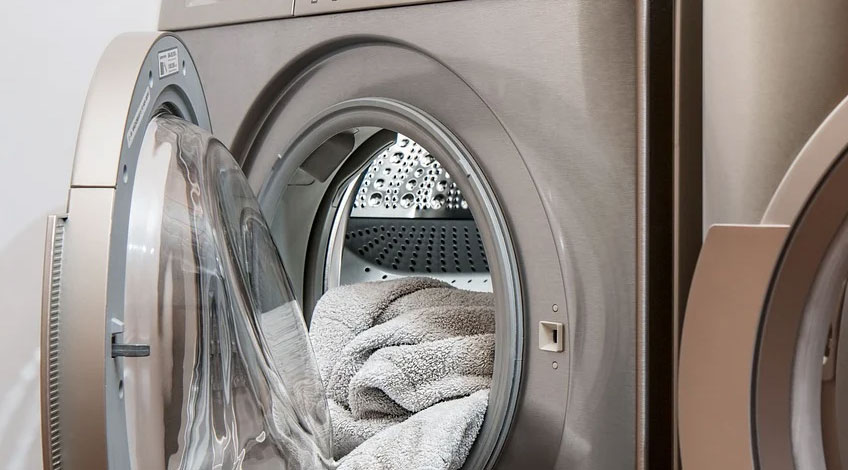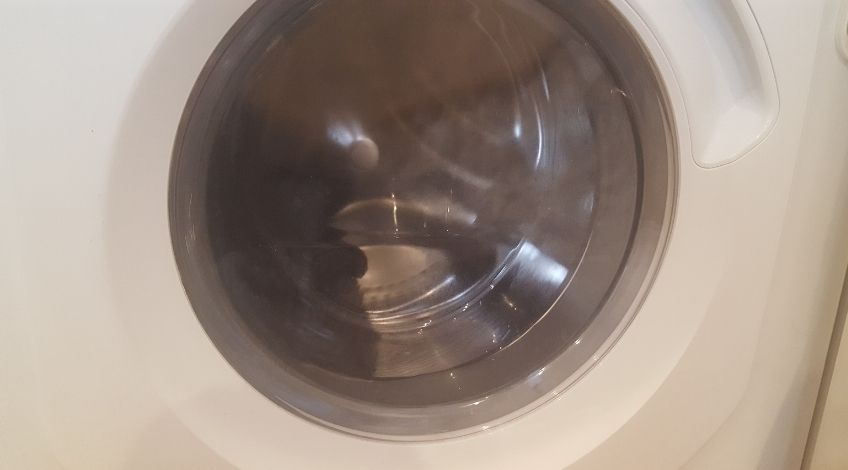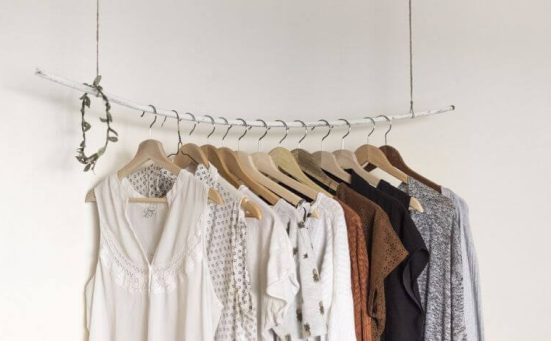 Last Updated: Jun 2024
Last Updated: Jun 2024 Different Types Of Tumble Dryers Explained – which is right for you?
Since the electric tumble dryer first hit the market in the 1930s, they have come a long way. The early models all worked on the basic principles that were originally used on the very first models 200 years ago. Basically a metal drum with holes that was cranked by hand over an open fire.
The early electric models used the same design of a metal drum with holes subjected to a heat source with a vent to allow the hot moist air to escape leaving the clothes inside dry. But we now have more choice than just a vented machine, we have in fact, 3 choices.
We can choose between vented, condenser or heat pump tumble dryers. But what are the differences? And which type is best for you? Keep reading as we look into the 3 different types of tumble dryer, how they operate and then you can decide which will suit you best.
Vented Tumble Dryers
Vented tumble dryers use a similar design to the original type of tumble dryer, a metal drum full of holes into which the clothes are placed. The drum is turned and subject to heat and there is a hose to pump the hot, damp air out leaving the clothes inside the drum warm and dry. To find out more about vented tumble dryers check out our article here.
Popular Vented Models
What Are The Pros Of A Vented Tumble Dryer?
One of the main advantages of a vented tumble dryer is the price. Vented models tend to cost less than either of the other choices available. They are also a far simpler design which means there’s less to go wrong and far less settings to get confused with.
Most vented tumble dryers typically have less controls, fewer buttons and switches needed to operate the machine. This makes them great for technophobes and people with less of a grasp of technical issues in general.
What Are The Cons Of A Vented Tumble Dryer?
One of the main disadvantages of vented tumble dryers is they typically take longer to dry clothes than either of the other types of dryer available.
Another disadvantage is the way the steam is extracted from the machine.The steam produced while drying needs to be sent outside to dry the clothes. This means you’ll either have to have a hole cut through an external wall or you’ll need to have a long pipe extending from the tumble dryer and out of an opening, either a window or external door. This pipe will need to be tidied away after every use and whilst the door or window is open cold air is allowed to enter your home.
Vented tumble dryers are also far less energy efficient than the other types of machines. This means most stores tend to steer customers away from the vented tumble dryer and onto one of the other two types.

Condenser Tumble Dryers
Condenser tumble dryers work on very similar principles to vented tumble dryers, but without the vent. The warm, moist air is cooled on a condenser which turns the steam back into water which is collected in a tank that needs to be emptied on a regular basis.
Popular Condenser Models
What Are The Pros Of A Condenser Tumble Dryer?
As Condenser tumble dryers use a tank to store the extracted moisture, there’s no need for any external piping. Which means there’s no need for any structural changes to your home and no need to leave external doors or windows open during the drying cycle. This allows you far more flexibility in where you position your machine as it doesn’t need to be sited near an open window or external door.
Condenser tumble dryers tend to have the shortest drying times of all three types of machine. But that shorter drying time does come at a cost.
What Are The Cons Of A Condenser Tumble Dryer?
Condenser tumble dryers use higher temperatures to dry the clothes and can reach temperatures up to 75 C (167 F). We mentioned that as condenser tumble dryers need no access to the outside there is more flexibility in the siting of the machine. This is true but they do need a constant supply of cool air to work correctly. This means the appliance needs to be placed in a well ventilated room which allows warm air to exit.
This extra heat and the escaping of hot air means condenser tumble dryers use substantially more energy than heat pump tumble dryers. There is also the issue of emptying the water tank after each drying cycle. This can be difficult for the dexterously challenged and an annoyance for everyone.
Heat Pump Tumble Dryers
The basic design of a metal drum full of holes rotating over a source of heat is employed on the previous two types of tumble dryer, and the heat pump tumble dryer is no different. The difference comes in how the hot moist air or steam is dealt with. In the vented system, the steam is removed via a pipe, condenser models remove the steam via a condenser that turns the steam into water that is collected in a tank and removed manually.
Heat pump models use a totally different system entirely. They use hot air to absorb moisture from the clothes, this hot air passes through the drum and enters an evaporator. The evaporator removes the moisture which is collected and stored in a tank in a similar way to the condenser system. Some of the moisture is then reused to create more hot air which continues to remove moisture from the clothes.
Popular Heat Pump Models
What Are The Pros Of A Heat Pump Tumble Dryer?
The main advantage of heat pump tumble dryers is they are far more energy efficient than condenser and vented models. This is because they reuse the heat instead of having to create more heat on every rotation of the drum.
As they dry at cooler temperatures to condenser or vented systems, there is far less chance of the clothes shrinking, in fact the only thing liable to shrink is your electricity bill. Also as they’re freestanding, they can be sited almost anywhere.
What Are The Cons Of A Heat Pump Tumble Dryer?
One of the main disadvantages of heat pump tumble dryers is the price. They tend to be the most expensive type of dryer, in some cases more than twice or even three times as expensive as vented models.
They also take the longest amount of time to run through a cycle with an average of between 10 to 15 minutes longer than other comparable models. This might not seem like a long time but on every four loads, that’s potentially an extra hour of drying time.
There’s also the issue of the water tank that will still need emptying on occasion. This means although in theory heat pump tumble dryers can be sited anywhere, you will need unobstructed access to the removable water tank.

Still Not Sure Which To Buy?
If after reading through all of this information, you’re still not sure which type of tumble dryer is right for you, check out our chart below which itemises all the various points.
| Attribute | Type Of Tumble Dryer |
|---|---|
| Cheapest Purchase Price | Vented |
| Dearest Purchase Price | Heat Pump |
| Most Energy Efficient | Heat Pump |
| Least Energy Efficient | Vented |
| Easiest To Operate | Vented |
| Most Modern Technology | Heat Pump |
| Quickest Drying Time | Condenser |
| Slowest Drying Time | Heat Pump |
| Most Inflexible Positioning | Vented |
| Produces Most Heat | Condenser |
The above is just a general guide as some models offer more or less in terms of energy efficiency and temperatures reached etc…
Our Advice
Whichever type of tumble dryer you choose, we suggest that if you live in a climate like that of the UK, that a tumble dryer is not only a handy machine to own, it’s essential.
Our cold, wet Winters make drying clothes essentially an indoor job which either means damp, musty clothes sitting around your home or wearing damp clothing.
A tumble dryer takes all of the problems of wet washing away through the Winter months. If you would like further information on vented or condenser tumble dryers follow this link.
Frequently Asked Questions
The 3 main types of tumble dryers are vented, condenser and heat pump. The main differences between these 3 is how they extract hot air. Vented rely on a pipe that needs access to the outside, condensers use a condenser to turn the hot air into water that is stored in a tank and needs to be emptied after every cycle, and heat pumps reuse much of the hot air over the course of the drying and are essentially upgraded versions of condenser types.
The answer to which is better, condenser or vented dryers is dependent on personal choice. Vented dryers need access to the outside to allow steam to be removed from the dryer. Whereas Condenser tumble dryers remove the steam via a condenser that converts the steam into water which is stored in a tank that will need emptying frequently. Vented machines need to be sited near an outside door or window whereas condenser types can be sited almost anywhere with adequate ventilation and enough space to access the water tank.
The type of tumble dryer that is cheapest to run is the heat pump tumble dryer. However it is also the type that takes the longest to dry clothes.
The type of tumble dryer that is cheapest to buy is the vented tumble dryer. However, it is also the least energy efficient type of tumble dryer.
The type of tumble dryer that is most energy efficient is the heat pump tumble dryer as it reuses much of the hot air that it extracts from the steam created during the drying process. It is also the type that uses the least heat which is safer for delicate clothes.
The main difference between a heat pump and a condenser dryer is the way the steam is dealt with. In condenser types, the steam is cooled to produce water that is stored in a tank which needs to be removed regularly. In heat pump types most of that hot air is reused making them far more energy efficient. Heat pump tumble dryers take an average of 10 to 15 minutes longer to dry clothes at lower temperatures than condenser types.
Condenser dryers do not need a drain, the water extracted from the hot air is stored in a water tank that needs to be physically emptied after each use.
Heat pump tumble dryers do not need to be plumbed in and can be sited almost anywhere within reason. You will need to physically empty the water tank on occasion, but there is no need to plumb it into the drainage system of your home.







![AEG 7000 SensiDry Freestanding Tumble Dryer TR718L4B, 8 kg, Heat Pump Technology, Gentle Drying, PreciseWash Adjust Time & Energy Usage Based On Load Size, White [Energy Class A++]](https://m.media-amazon.com/images/I/41pScU0EV6L._SL160_.jpg)




